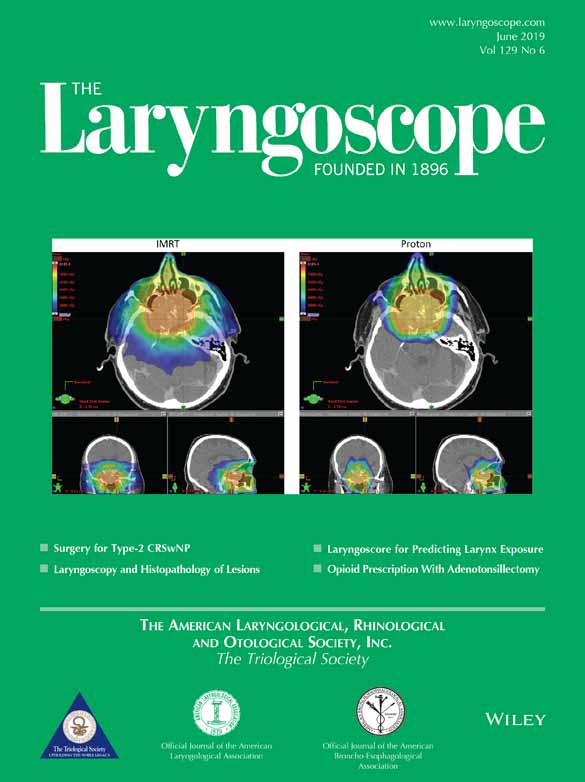Experimental animal model for assessment of tracheal epithelium regeneration
This work was supported by intramural funding from the National Research Center Kurchatov Institute (1386). The authors have no other funding, financial relationships, or conflicts of interest to disclose.
Abstract
Objectives/Hypothesis
To develop an experimental model in rabbits for assessment of tracheal epithelium regeneration through application of either natural or artificial polymer scaffolds.
Study Design
First, we identified the size of full-thickness mucosal defect, which does not allow self-healing (a “critical defect”), thus representing an adequate experimental model for regenerative therapy of tracheal epithelium damage. Then, two methods of polymer scaffold fixation at the site of the epithelium defect were compared: suturing and fixation with a stent. This was done through: 1) formation of a full-thickness anterolateral mucosal defect by tracheal mucosa excision; and 2) fixation of the scaffold at the site of the tracheal epithelium defect using sutures (through a tracheal wall “window”) or a vascular stent (through a small tracheal incision).
Results
The dimension of a critical anterolateral mucosal defect of the trachea for rabbits was found to be 1.5 cm in length and more than 50% of the tracheal circumference. Fixation of the scaffold with a stent proved to be more efficient due to a uniform distribution of the pressure over the entire surface of the scaffold, whereas the suturing of the scaffold provided unsatisfactory results. In addition, fixation of the scaffold by suturing required formation of a large “window” in the tracheal wall. Thus, using the stent appeared to be technically less complicated and much less traumatic as compared to suturing.
Conclusion
We present an experimental in vivo animal model of tracheal epithelium injury and recovery. It can be effectively used with certain further modifications as a basis for routine testing of bioengineered constructs.
Level of Evidence
NA
Laryngoscope, 129:E213–E219, 2019




